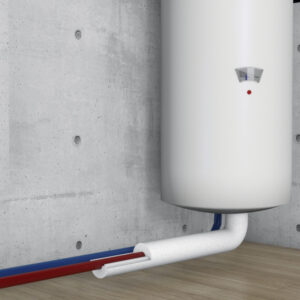Pipes in unheated premises
Necessity
Effective use of resources is especially important in managing buildings. A major portion of energy consumption at home is directed towards processes associated with heating hot water preparation, heating or cooling of ventilation air. These resources are wasted when temperature fluctuates as a result of divisions. Energy is then consumed because there is a significant temperature difference between the room and substance to be transported and heat starts to migrate from the warmer place to the colder one. These processes are unwelcomed because they increase expenses for energy supply; furthermore, there can also be a condensate build-up, significant power loss in equipment and other processes.
Use
The most loses in households can be seen in unheated basements, heating rooms and places where pipes run outside the building. The loses mostly come from the fact that the pipes show low heat resistance as a result of which there is a heat transfer. As a result of thermal convection processes, energy travels from the hotter place to a colder one. There are two consequences for these processes. If the temperature of the substance in the pipe is lower than the temperature in the room, there will be a condensate on the pipe and temperature inside will increase. But if the pipe temperature is higher than the temperature in the room, the opposite process will take place and the temperature of the substance to be transported will decrease. Both processes can be limited by mounting additional thermal insulation on the external part of the pipeline.
Thermal properties
The production of pipes employs various metals with thermal conductivity from 10 to 400 W/m*K. For polystyrene foam, these properties are much lower – from 0.031 to 0.36 W/m*K. Use of such a material will lead to heat loses (in case of equal thickness) which are about 1,000 lower. EPS and NEO EPS materials are some of the mots effective thermal insulators, commonly used in construction industry. The effectivity is even more increased by its ability to resist water absorption which guarantees long-term efficiency.
Longevity
If the operational properties of the material are properly followed, its service time can exceed 50 years. There are two things everybody should take into account before mounting works. EPS material is organic and therefore it cannot be exposed for a prolonged period of time to a temperature exceeding +80oC. Just like any other organic material, EPS starts to rapidly decompose if exposed to excessive temperatures, becoming soft, gradually losing its shape integrity and other technical, properties. Due to this reason it is not advised to use polystyrene foam in heating systems where heating carrier temperature exceeds +70oC. EPS cannot be used under prolonged UV radiation or direct sunlight. Exposed to light, the material can start to become yellow and slowly decompose. In such cases, the material should be protected with a paint or any other protective cover.



